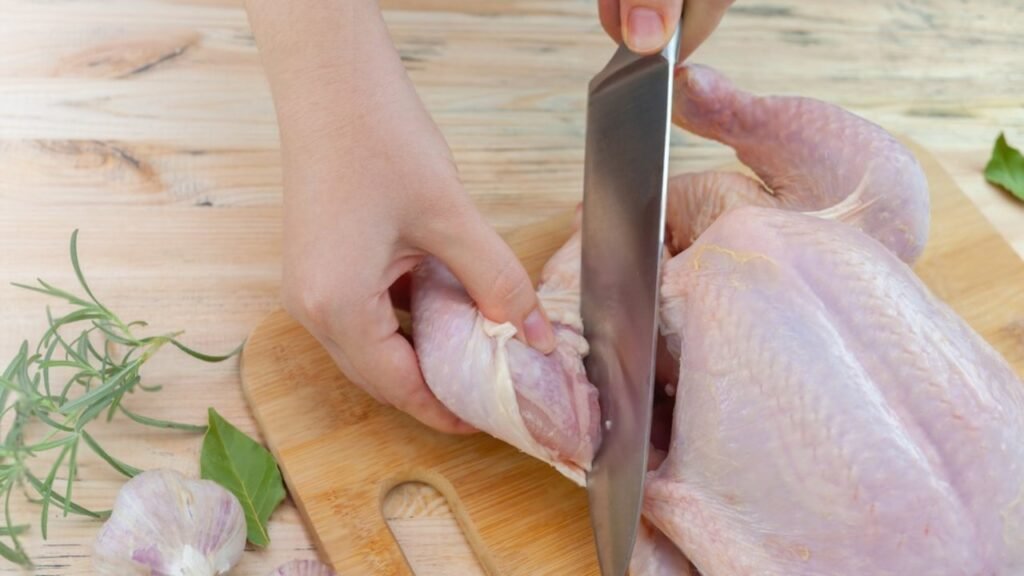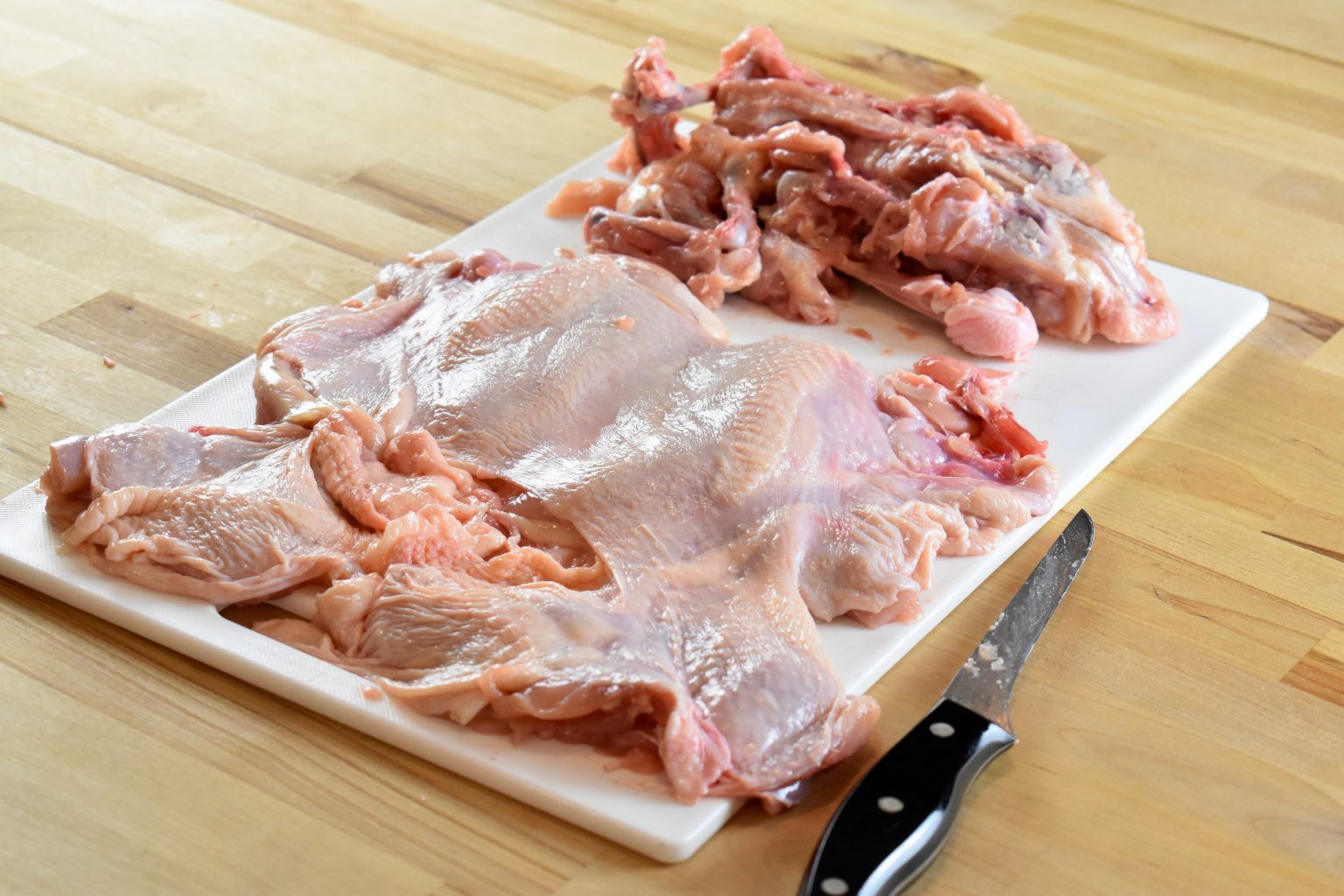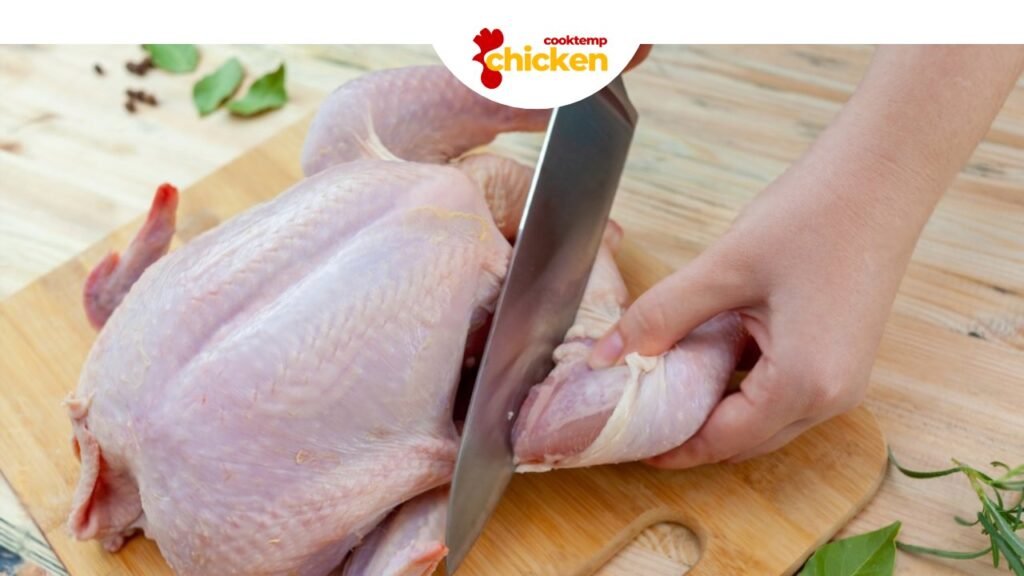Ever found yourself with a bone-in chicken breast and wondered, how to remove bone from chicken breast efficiently and safely? Whether you’re prepping for a delicious stir-fry, a hearty salad, or a gourmet sandwich, mastering the art of deboning chicken can elevate your cooking game and ensure your meals are both tasty and visually appealing. Removing the bone not only makes the chicken easier to eat but also allows for better seasoning and even cooking. Let’s dive into the techniques, tools, and tips you need to effortlessly remove bone from chicken breast.
Why Remove Bone from Chicken Breast?
Before we jump into the how, it’s essential to understand the why behind removing bone from chicken breast. Knowing the benefits can motivate you to perfect this skill and integrate it seamlessly into your cooking routine.
1. Even Cooking
Bone-in chicken breasts can cook unevenly, with the meat near the bone taking longer to cook than the rest. By removing the bone, you ensure that each piece cooks uniformly, resulting in juicy and tender chicken every time.
2. Better Flavor Absorption
Boneless chicken breasts have more surface area exposed to marinades and seasonings, allowing flavors to penetrate deeper into the meat. This results in more flavorful and succulent dishes.
3. Versatility in Recipes
Boneless chicken breasts are more versatile and can be used in a wider variety of dishes, from quick weeknight dinners to elaborate gourmet meals. They are easier to slice, dice, and incorporate into different culinary creations.
4. Easier to Handle and Eat
Boneless chicken is easier to manage during cooking and more convenient for diners, as it eliminates the hassle of dealing with bones while eating.
5. Health Benefits
Removing bones often involves trimming excess fat and tendons, leading to a leaner and healthier meal option. This is particularly beneficial for those monitoring their fat intake.
Tools You’ll Need
To successfully remove bone from chicken breast, having the right tools is crucial. Here’s a list of what you’ll need:
- Boning Knife: A sharp boning knife with a flexible blade is ideal for maneuvering around bones and joints.
- Cutting Board: A sturdy and stable cutting surface ensures safety and precision.
- Kitchen Shears (Optional): Useful for cutting through tough areas and making initial cuts.
- Parchment Paper or Plastic Wrap (Optional): To prevent the chicken from sticking to the cutting board.
- Paper Towels: For drying the chicken breast before starting.
- Cling Film (Optional): Helps in handling the chicken more easily during the process.
Step-by-Step Guide on How to Remove Bone from Chicken Breast

Follow these detailed steps to master how to remove bone from chicken breast effectively and efficiently:
1. Prepare Your Workspace
Start by setting up a clean and organized workspace. Place your cutting board on a stable surface and gather all necessary tools. Ensure your boning knife is sharp for clean, precise cuts.
2. Trim Excess Fat and Tendons
Use your boning knife to trim any excess fat, tendons, or gristle from the chicken breast. This not only improves the texture but also ensures uniformity in cooking.
3. Identify the Bone Structure
Examine the chicken breast to locate the bone structure. Typically, bone-in chicken breasts have a central bone running through the middle with smaller bones branching out. Understanding the layout will help you navigate the deboning process more effectively.
4. Make an Initial Cut
Place the chicken breast skin-side down on the cutting board. Starting at one end, make a shallow incision along the bone using the tip of your boning knife. This initial cut will help you access the bone and start the separation process.
5. Follow the Bone Path
Carefully follow the bone’s path with your knife. Use short, controlled strokes to maneuver around the bone, gently prying it away from the meat. The flexibility of a boning knife allows you to make these precise movements without damaging the flesh.
6. Separate the Meat from the Bone
As you follow the bone, continue to separate the meat from it by gently pushing the knife along the bone. Work slowly and methodically to ensure you remove all bone fragments without leaving any behind.
7. Remove the Rib Bone (If Present)
Some chicken breasts may have a rib bone attached. Use your knife to carefully cut around the rib bone, removing it from the main piece of meat. Ensure you follow the bone’s natural curves for a clean separation.
8. Inspect for Remaining Bone Fragments
After removing the main bone structure, inspect the chicken breast for any remaining bone fragments or cartilage. Trim these off with your boning knife to ensure a completely boneless piece of chicken.
9. Final Trim and Shaping
Trim any remaining fat or connective tissue to achieve a clean and even shape. This step ensures that your boneless chicken breast is ready for cooking and presentation.
10. Optional: Flatten the Chicken Breast
For certain recipes, you might want to flatten the boneless chicken breast to an even thickness. Place the chicken between two sheets of parchment paper or plastic wrap and gently pound it with a meat mallet until it reaches the desired thickness.
Tips and Tricks for Effective Bone Removal
Mastering how to remove bone from chicken breast requires practice and attention to detail. Here are some tips and tricks to help you perfect this skill:
1. Use a Sharp Knife
A sharp boning knife makes the deboning process smoother and more efficient. Regularly sharpen your knife to maintain its effectiveness.
2. Chill the Chicken Breast
Refrigerate the chicken breast for about 30 minutes before cutting. Cold meat is firmer and easier to handle, reducing the risk of slipping and making bone removal more manageable.
3. Take Your Time
Rushing through the process can lead to mistakes and injuries. Take your time to make precise cuts and ensure you remove all bones and fragments.
4. Practice Proper Hand Placement
Hold the chicken breast firmly with your non-dominant hand, curling your fingers inward to protect them from the blade. Use your dominant hand to guide the knife with controlled movements.
5. Maintain Consistent Cuts
Ensure that your cuts are consistent in depth and angle. This consistency helps in maintaining the integrity of the meat and prevents accidental cuts into the bone.
6. Clean as You Go
Keep your workspace clean by removing any bone fragments or excess fat as you work. This practice helps in maintaining focus and prevents clutter from interfering with your cuts.
7. Use Kitchen Shears for Tough Areas
For particularly tough areas or initial cuts, kitchen shears can be a useful alternative to knives. They offer more control and can make the process easier, especially for beginners.
Safety Considerations
Removing bone from chicken breast involves handling sharp knives and working with raw meat. Here are some safety tips to keep in mind:
1. Wear Cut-Resistant Gloves (Optional)
For added protection, especially if you’re new to deboning, consider wearing cut-resistant gloves. They provide an extra layer of safety against accidental cuts.
2. Keep Knives Sharp
Dull knives are more likely to slip and cause injuries. Regularly hone and sharpen your knives to ensure they remain effective and safe to use.
3. Stabilize the Cutting Board
Ensure your cutting board is stable by placing a damp cloth or non-slip mat underneath. This prevents the board from moving while you cut, enhancing safety and precision.
4. Avoid Distractions
Focus entirely on the deboning process. Avoid distractions to maintain control over your knife and prevent accidents.
5. Store Knives Safely
After deboning, immediately store your knives in a safe place to prevent accidental cuts and maintain their sharpness.

Comparing Tools for Bone Removal
Different tools can aid in the process of removing bone from chicken breast. Here’s a comparison to help you choose the best one for your needs:
Comparison of Tools for Removing Bone from Chicken Breast
| Tool | Pros | Cons | Best For |
|---|---|---|---|
| Boning Knife | Flexible blade, precise control | Requires practice to master | Most effective for detailed deboning |
| Chef’s Knife | Versatile, sharp | Less flexible than a boning knife | General kitchen tasks, lighter bone removal |
| Kitchen Shears | Easy to use, good for initial cuts | May not provide as clean cuts as a knife | Beginners, smaller or tougher areas |
| Meat Slicer | Uniform cuts, efficient for large quantities | Expensive, requires maintenance | Commercial kitchens, frequent use |
| Bone Saw | Powerful, handles large bones | Bulky, not suitable for small tasks | Heavy-duty bone removal |
Insight: While a boning knife is the most effective tool for removing bone from chicken breast due to its flexibility and precision, kitchen shears can be a great alternative for beginners or for handling tougher areas. Chef’s knives offer versatility but may not be as efficient for detailed deboning.
Personal Experiences and Opinions
I remember the first time I attempted to remove the bone from a chicken breast. Armed with a sharp chef’s knife and a bit of confidence, I thought it would be a breeze. However, I quickly realized that without the right technique and tool, the process was frustrating and left me with uneven cuts. After watching several tutorials and practicing with a boning knife, I noticed a significant improvement
in my deboning skills. The boning knife’s flexibility allowed me to navigate around the bone effortlessly, resulting in perfectly boneless chicken breasts ready for my favorite recipes. This experience taught me the importance of using the right tools and taking the time to master proper techniques.
Expert Opinions and Industry Insights
To gain a deeper understanding of how to remove bone from chicken breast, let’s explore insights from culinary experts and professional chefs.
Culinary Professionals
Chef Gordon Ramsay, a world-renowned culinary expert, emphasizes the importance of knife skills in the kitchen. “A sharp boning knife and proper technique are essential for removing bones from chicken breast efficiently. It not only saves time but also ensures that your dishes are both visually appealing and delicious.”
Knife Manufacturers
Wüsthof, a leading knife manufacturer, advises, “Investing in a high-quality boning knife can make a significant difference in your kitchen tasks. A well-crafted boning knife provides the flexibility and precision needed for effective bone removal, enhancing both the quality and presentation of your meals.”
Materials Scientists
Dr. Emily Carter, a materials scientist specializing in metallurgy, explains, “The blade material and design of a boning knife play crucial roles in the deboning process. High-carbon stainless steel offers excellent durability and edge retention, while a flexible blade allows for precise movements around bones without damaging the meat.”
Frequently Asked Questions (FAQs)
1. What is the best knife for removing bone from chicken breast?
A boning knife is the best choice for removing bone from chicken breast due to its flexible blade and precise control. However, a sharp chef’s knife or kitchen shears can also be effective alternatives.
2. Can I remove bone from chicken breast without a knife?
Yes, you can use kitchen shears or a meat slicer to remove bone from chicken breast. While these tools can be effective, a boning knife offers greater precision and control.
3. How can I prevent the chicken breast from tearing while deboning?
To prevent tearing, ensure your knife is sharp and make clean, controlled cuts. Chilling the chicken breast before cutting also makes it firmer and easier to handle, reducing the risk of tearing.
4. Is it necessary to remove all bones from chicken breast?
While it’s not always necessary to remove all bones, ensuring that there are no bone fragments left in the meat is crucial for safe and enjoyable eating. Removing the main bone structure helps in even cooking and better flavor absorption.
5. How do I clean and maintain my boning knife?
After each use, wash your boning knife with warm, soapy water and dry it immediately. Regularly sharpen and hone the blade to maintain its edge. Store the knife in a safe place, preferably in a knife block or sheath, to prevent damage.
6. Can I freeze chicken breasts before deboning them?
Yes, freezing chicken breasts can make them easier to handle while deboning. However, allow them to thaw completely in the refrigerator before starting the deboning process to ensure safety and ease of cutting.
7. What should I do if I leave a small bone fragment in the chicken breast?
If you accidentally leave a small bone fragment in the chicken breast, carefully remove it before cooking. Use your fingers or a pair of clean tweezers to extract the fragment to ensure your meal is safe and enjoyable.
8. How long does it take to remove bone from a chicken breast?
With practice and the right tools, removing bone from a chicken breast can take as little as a few minutes. Initially, it might take longer as you familiarize yourself with the technique, but efficiency improves with experience.
9. Can I use a serrated knife to remove bone from chicken breast?
While a serrated knife can be used, it is not the most effective tool for removing bone from chicken breast. A boning knife or a sharp chef’s knife is preferable for clean and precise cuts.
10. Are there any health benefits to removing bone from chicken breast?
Removing bone from chicken breast allows for better portion control and reduces the fat content by trimming excess fat and tendons. It also makes the chicken easier to consume, reducing the risk of choking on bone fragments.
Conclusion
Mastering how to remove bone from chicken breast is a valuable skill that can significantly enhance your cooking efficiency and the quality of your meals. By using the right tools, following proper techniques, and adhering to safety practices, you can effortlessly transform bone-in chicken breasts into perfectly boneless pieces ready for a variety of delicious dishes. Whether you’re a seasoned chef or a passionate home cook, honing your deboning skills will make meal preparation smoother, more enjoyable, and ensure your dishes are both flavorful and visually appealing.


